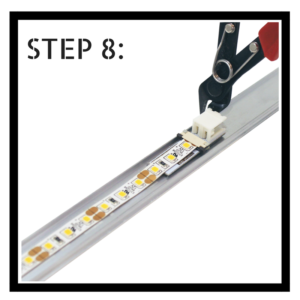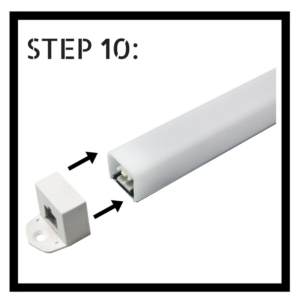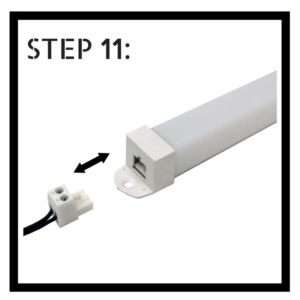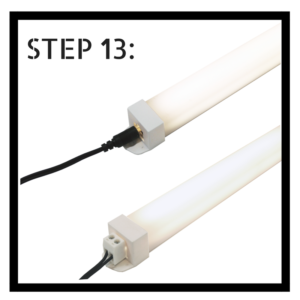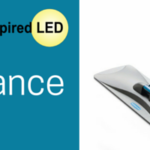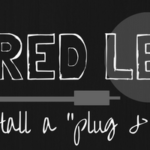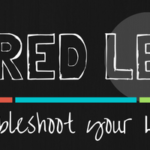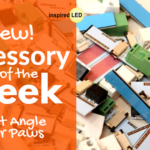 When Inspired LED opened its doors back in 2009, our owners began with a mission to provide high quality low-voltage fixtures to the public. LEDs were already well-known within technology and commercial sectors, especially around Silicon Valley. However as a contractor or homeowner it was more difficult to find reliable affordable solutions for replacing fluorescent and incandescent bulbs.
When Inspired LED opened its doors back in 2009, our owners began with a mission to provide high quality low-voltage fixtures to the public. LEDs were already well-known within technology and commercial sectors, especially around Silicon Valley. However as a contractor or homeowner it was more difficult to find reliable affordable solutions for replacing fluorescent and incandescent bulbs.
Many of our original products, including the Pro Series and Designer Series Kits were specially designed to suit this purpose, providing simple plug & play options that allowed customers to add light wherever they needed it most, (without having to hire an electrician). While these simple premade fixtures and kits remain a staple of our business, over the years we have also developed more cost-effective and customizable solutions through our flexible LED strips!
Available in a variety of brightness levels and colors, our Flexible LED Strips are designed to be cut every few inches or so (depending on the product) and terminated using a soldering iron, or one of our patented Solderless Tiger Paw Connectors. This new line of products opened up a whole new side of our business, allowing us to create custom designs and build specialty fixtures specifically tailored to different locations, from kitchens to auditoriums…
As contractors and electricians became more comfortable with our products, we unveiled several exclusive channels and lenses designed to allow customers to build our products on their own in the field. Then, last April, we released our first series on components designed specifically for handy homeowners. The DIY Radiant Edge Series provides a simple, affordable way for customers to buy in bulk, save time on ordering custom, and build their own energy-efficient fixtures right from home!
Now, we’re pleased to announce the expansion of the Radiant Edge product line to include our original 1” square profile lens and matching end caps—a bold style for a modern look! Featuring a frosted diffusor lens which completely eliminates the “dot effect”, the 1” Radiant Edge is the perfect addition to any contemporary kitchen, office, or workshop.
Follow the steps below, and learn how to create this sleek fixture on your own!
- DIY Tall (1”) Radiant Edge Lens(es)
- DIY Tall Radiant Edge End Caps (with and without wiring input holes)
- DIY Radiant Edge Aluminum Channel(s)
- DIY Radiant Edge Mounting Clips (screws included)
- 12V Super, Ultra, or Mega Bright Flexible LED Strips
- Inspired LED’s patented 3.5 x 1.3mm Plug-in Tiger Paw® (to be used with standard interconnect cables)
or any Tiger Paw® Screw Terminal (to be used with bulk 16-12AWG solid copper wire)
**We recommend either our Green, or our new White Screw Terminal for the cleanest look! - 12V DC Power Supply or Hardwire Transformer
- Interconnect cables or bulk 16-12AWG copper wire (depending on selected Tiger Paw® style)
- Pair of scissors
- Pair of tin snips or dikes
- Wire strippers (depending on connector style)
- Measuring tape
- Super glue (if desired)
- Small Phillip’s head screw driver
Note: The process of building a DIY Radiant Edge panel is fairly simple, however measurements must be made carefully, and instructions followed as precisely as possible to ensure best results. As always, use caution when working with electricity (even low voltage), and if installing a hardwire transformer, we recommend hiring a licensed electrician!
Step 1: To build, begin by measuring the total available space for your completed Radiant Edge panel.
Step 2: Determine the necessary length of your internal LED strip by taking the total available space and subtracting 2” for each connector you will be using. If you’re creating a simple 1-panel system, you will only need a connector on one side, so you will subtract 2” total. If you are creating a “daisy chain” set-up where one panel links to the next, you will need a connector on both sides, so you will subtract 4” total.
Step 3: Use scissors to cut your flexible LED strip to length. Cut along the copper pads located closest to your final measurement without going over.
Step 4: Prepare to attach the Plug-in Tiger Paw® or Tiger Paw® Screw Terminal by peeling back adhesive the lining from the LED strip (about 1/2″), and pulling open the black sliding latch on your connector.
Step 5: Insert the exposed LED strip between the black latch and beige bridge on your connector, then slide latch closed. If you’re using a standard Plug-in Tiger Paw®, ensure (+) polarity of connectors is matched to the (+) polarity as marked along the LED strip.
If you’re using a Tiger Paw® Screw Terminal, identify the (+) polarity as marked along the strip–this will determine the polarity of wiring in step 10. Your positive wire will align with the positive side of LED flex strip.
Step 6: Use a 12V DC power supply to test strip functionality. If your LEDs do not turn on, double check that polarities are properly matched. Repeat steps 4-7 to add connectors to the opposite side of your LED flex as needed.
Step 7: Remove the adhesive backing from your finished LED strip and from each of your Tiger Paw® connectors. If you’re using Screw Terminals, be sure to remove and set aside the wire port before proceeding. Then carefully align the end of your connector with the edge of your uncut aluminum channel, and adhere the strip along the center.
Step 8: Use sharp tin snips or dikes to cut aluminum to length as close as possible to the opposite end of the LED strip (which may or may not have a connector of its own). Snip each raised edge and gently bend aluminum back and forth until it becomes fully separated.
Step 9: Cut your plastic lens to length using a table saw. Or for the easiest cut, use a sharp pair of dikes to first snip each edge, then gently bend plastic back and forth until it becomes fully separated.
Step 10: Line up plastic lens with aluminum channel, and snap or slide it into place. Slip desired end caps onto each side, using open caps where wire inputs are needed, and closed caps for ends where no outputs are required. A dab of super glue may be used to secure caps in place if desired.
Step 11: If using a Tiger Paw® Screw Terminal, ensure that your end caps line up with the wire input port set aside in step 7. Test out your connection before proceeding to install.
Step 12: To install, you may secure your DIY Radiant Edge panel onto the desired surface using the screw holes located on each end cap. For longer panels, we recommend using mounting clips to provide additional support every 12”. Or, if you prefer, the end cap mounting tabs can be removed entirely by bending firmly back and forth. Panels can then be installed using mounting clips every 12”.
Step 13: If using Plug-in Tiger Paws®, use Inspired LED interconnect cables to plug one DIY Radiant Edge panel into the next, ensuring the first panel in series is connected directly to a 12V DC plug-in power supply. If using Tiger Paw® Screw Terminals, insert wire port back into end connector, then run cables back to power supply or hardwire transformer, making connections using wire nuts.
Step 14: Follow corresponding instructions to incorporate switches, dimmers, power supplies and transformers for a complete LED system. Be sure to check the Inspired LED power chart to calculate wattage and voltage drop for the type of LED flex you have selected.
And there you have it! A simple way to create custom LED fixtures with just a bit of creativity and a few basic components. Inspired LED’s DIY Radiant Edge System is the perfect add-on to our Cut & Connect Series Kits, which come with everything you’ll need to build a basic plug & play lighting system- including cables, connectors, power supplies, and flexible LED strips in a variety of brightness levels and color temperatures. Mix and match as needed to create the ideal layout for any home or business!
For more information on Inspired LED products and services, be sure to visit our website: www.inspiredled.com. If you have specific assembly or installation questions about the DIY Radiant Edge system, we are happy to help. Send us an email at orders@inspiredled.com, or give us a call at 480-941-4286.








